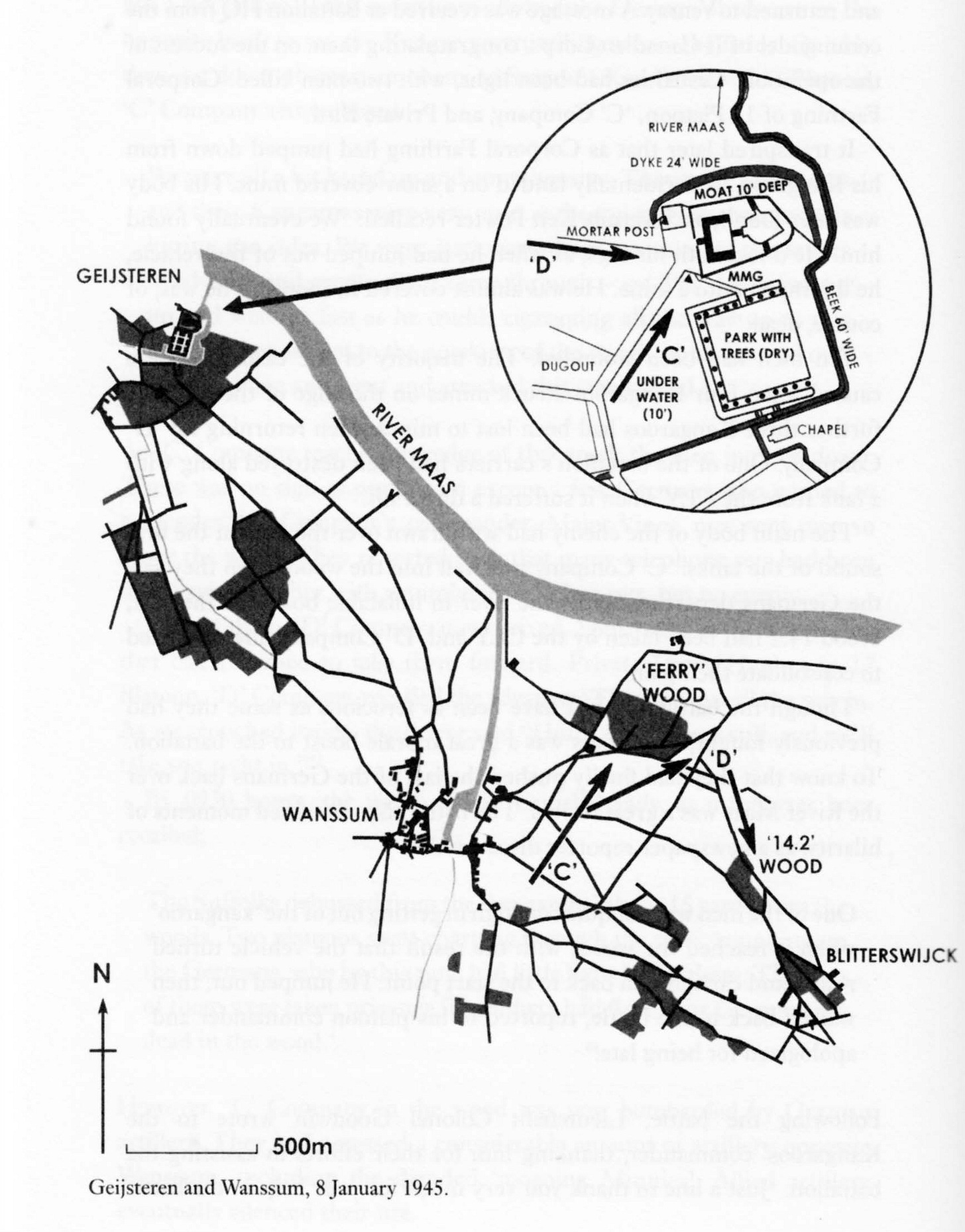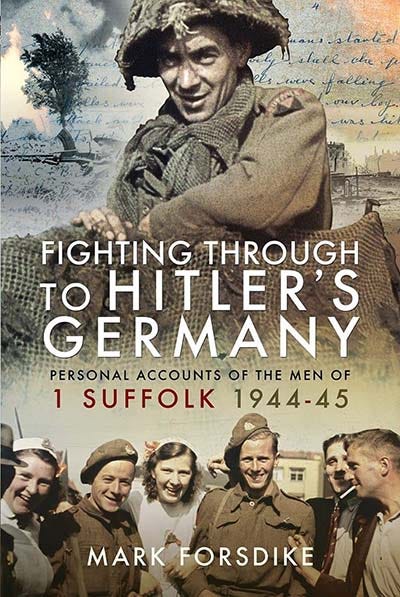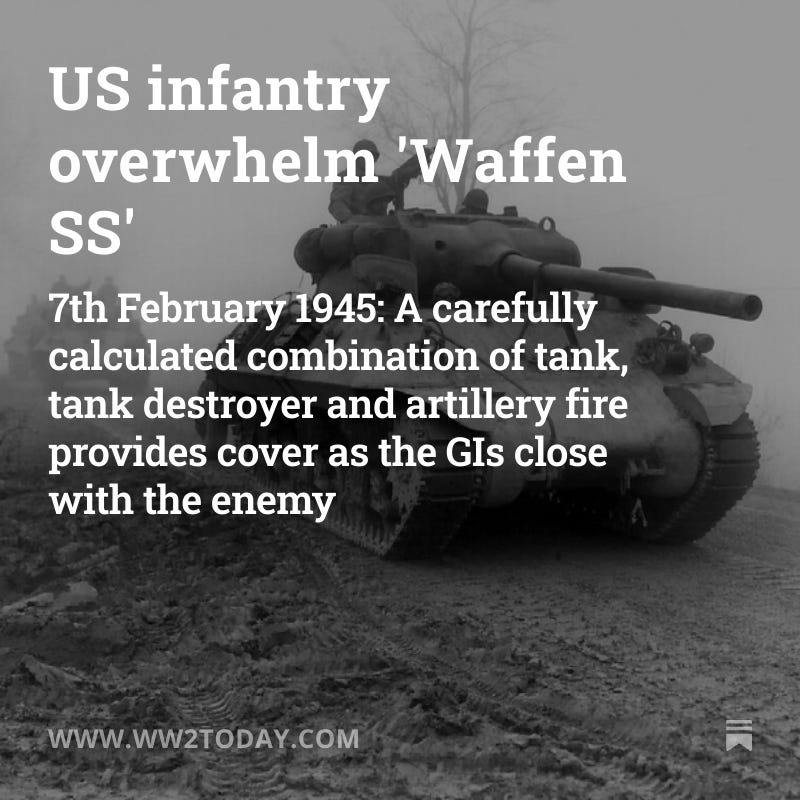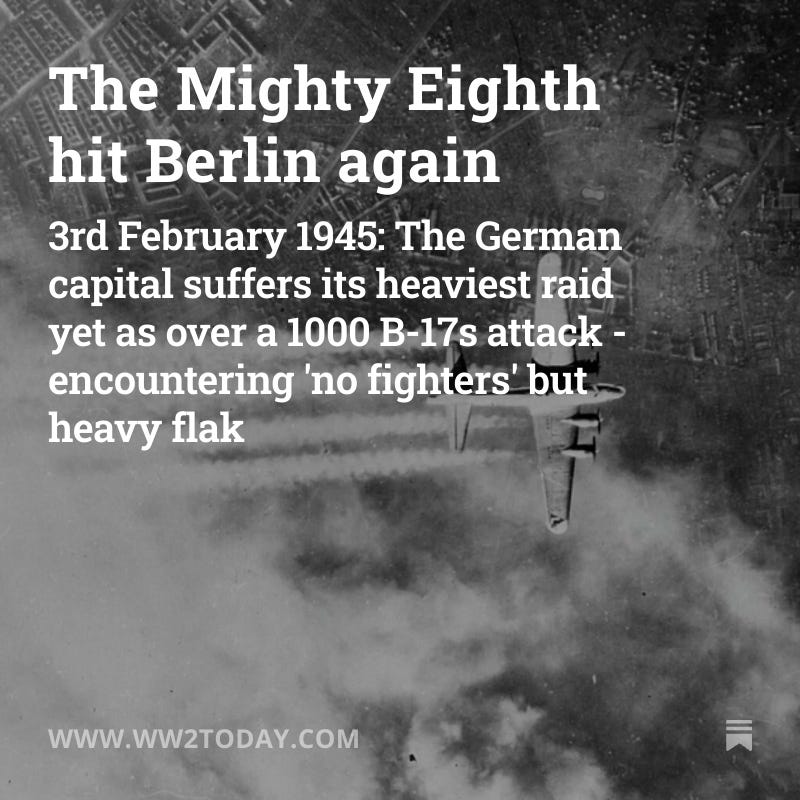'Fighting Through to Hitler's Germany'
An Infantry Battalion gets carried into battle in the new 'Kangaroo' Armoured Personnel Carriers

The 1st Battalion, the Suffolk Regiment, had suffered heavy casualties in France in 1940. The survivors were evacuated through Dunkirk - and like much of the surviving British Expeditionary Force - formed the nucleus around which the new, much expanded British Army was established. They did not return to France until D-Day. Fighting Through to Hitler's Germany: Personal Accounts of the Men of 1 Suffolk 1944–45 tells their story. This is how ordinary Englishmen - drawn from all walks of life by conscription - fought the war and helped liberate Europe.
The following excerpt is an account of an attack that the battalion made on 8th January 1945. This was notable as being one of the first occasions when British infantry went into battle in Armoured Personnel Carriers (APCs) - an occasion that got much attention in the British press at the time.
It now seems surprising that APCs arrived so late in the war for the Allies. During the 1939-1945 war, the infantry often suffered many casualties as they formed up for battle or approached their assault lines. If the enemy could guess where they were ‘forming up’ for an attack, it was customary to lay down an artillery barrage to hit them before the attack had even begun. APCs began to reduce infantry casualties at this stage in the battle very dramatically - it was a radical innovation that surprised at least one British general:
The attack on Wanssum Wood, 8th January 1945
With speed being the key to capturing the wood, two troops of Armoured Personnel Carriers (APCs) known as ‘Kangaroos’ would be used to transport ‘C’ Company across the open ground to the edge of the wood. It would be the first time the battalion had taken part in an operation with Kangaroos and ‘C’ Company would need much practice in loading equipment and dismounting. ‘D’ Company would follow ‘C’ Company in carriers as there were not enough Kangaroos to transport both companies forward together.
These Kangaroos were Sherman tanks minus the turret. Hollowed out of non-essential supplies, they allowed up to ten men to travel inside in relative safety before disembarking at their objective. Their crews were Canadians of the newly-formed 1st Canadian Armoured Carrier Regiment whose approved cap badge featured a kangaroo in honour of their mounts. The battalion had the distinction of being the first Allied troops to be carried into battle by this new regiment.
The morning of 7 January was spent in Venray practising embarking and disembarking from these new vehicles until it could be done without command. One man per vehicle was detailed to operate the .30 calibre machine gun that was mounted on top, and every man learned which was his ‘pet’ Kangaroo so that when they arrived in the forming-up area, he could embark quickly. They would be assisted in clearing the wood by a squadron of Sherman tanks from 3/4 County of London Yeomanry (CLY), while a diversionary attack was carried out by the 20th Anti-Tank Regiment, Royal Artillery.
At 0500 hours on 8 January, the battalion advanced: ‘C’ Company first in the Kangaroos; ‘D’ Company following behind in the carriers. Snow was falling and the Kangaroos skidded and slid along the icy marshland tracks. In these precarious conditions, their speed had to be greatly reduced. This slowed the travelling time to Wanssum and meant that they were exposed for much longer than many of them would have wished. Nearing the objective, a blizzard began. Visibility of the target became greatly impaired, but the dreadful weather did have an advantage. The enemy could only hear them coming, but they couldn’t see from where. A smokescreen that was due to be laid to cover the opening phase of the attack was cancelled as the snow was doing the job more than adequately.
‘They took us all the way in. As we crouched inside, the driver said “Heads down, keep still, and we’ll take you right in.’”
As ‘C’ Company’s Kangaroos halted, they awaited the order to advance, but a slackening of the snowstorm allowed the German observers on the opposite bank to see the Kangaroos trundling across the fields. Quickly, they put down a barrage on them, as Sergeant Ken Powter of 13 Platoon, ‘C’ Company remembered: We were all a bit keyed up and apprehensive. They were shelling us and these Kangaroos were very open at the top and the shrapnel was hitting the sides. We were stationary there, waiting for the orders to advance and eventually it came through - go! The driver revved up and went as fast as he could, zigzagging all the way up to this wood. When we got to the outskirts of the wood, we all jumped out, extended line and went and attacked this small wood.
As ‘C’ Company reached the edge of the wood, the men jumped down. There was no sign of opposition except a few Germans who wished to surrender. ‘C’ Company’s commander, Major Vines, now sent men to scour the wood. They reported back that many telephone sets had been discovered together with a number of wireless sets, but no enemy.
Behind them, ‘D’ Company now arrived. Some were in the Kangaroos that had returned to take them forward. Private Harry Hughes in 17 Platoon, ‘D’ Company, recalled the advance: ‘They took us all the way in. As we crouched inside, the driver said “Heads down, keep still, and we’ll take you right in.’”
By 0930 hours, the wood was in British hands, as a reporter later recalled:
The Suffolks debussed from the ‘kangaroos’ about 15 yards from the woods. Two platoons went charging through the trees, rounding up the Germans, who by this time had little fight left in them. Thirteen of them were taken prisoner. The others had fled. Four Germans lay dead in the wood.
It transpired later that as Corporal Farthing had jumped down from his Kangaroo, he accidentally landed on a snow-covered mine.
However, ‘C’ Company in the wood was now bombarded by German artillery. They had amassed a considerable amount of artillery opposite Wanssum, including the dreaded ‘moaning Minnies’. Allied artillery eventually silenced their fire.
That evening ‘C’ and ‘D’ companies were relieved by the South Lancs and returned toVenray. A message was received at Battalion HQ from the commander of II Canadian Corps, congratulating them on the success of the operation. Casualties had been light, with two men killed: Corporal Farthing of 13 Platoon, ‘C’ Company, and Private Bird.
It transpired later that as Corporal Farthing had jumped down from his Kangaroo, he accidentally landed on a snow-covered mine. His body was later found, as Sergeant Ken Powter recalled: ‘We eventually found him. He’d lost both his legs, as when he had jumped out of the vehicle, he’d jumped onto a mine. He was almost covered in snow but he was, of course, dead.’
Ten men had been wounded. The majority of the casualties were caused when four Kangaroos struck mines on the edge of the wood. A further three Kangaroos had been lost to mines when returning for ‘D’ Company. One of the battalion’s carriers had been destroyed along with a tank from the CLY [City of London Yeomanry]when it suffered a direct hit.
The main body of the enemy had withdrawn over the river at the first sound of the tanks. ‘C’ Company was well into the wood when they saw the Germans departing across the river in inflatable boats. To the east, Wood 14.2 had been taken by the CLY and ‘D’ Company now advanced to consolidate their gain.
Though the battle may not have been as ferocious as some they had previously fought, its success was a great morale boost to the battalion. To know that they had finally pushed the last of the Germans back over the River Maas was a great feeling. The battle also contained moments of hilarity, as a newspaper reporter discovered:
One of the men was not quick enough in getting out of the ‘kangaroo’ when it reached the wood, with the result that the vehicle turned round and carried him back to the start point. He jumped out, then walked back to the battle, reported to his platoon commander and apologized for being late!
Following the battle, Lieutenant Colonel Goodwin wrote to the Kangaroos’ commander, thanking him for their efforts in assisting the battalion:
‘Just a line to thank you very much for your help in the battle last Monday. Your chaps were magnificent and went into battle with tremendous dash. Our troops are full of praise for them. The Kangaroos certainly put their finale up with a bang.”
© Mark Forsdike 2020, 'Fighting Through to Hitler's Germany: Personal Accounts of the Men of 1 Suffolk 1944–45'. Reproduced courtesy of Pen & Sword Publishers Ltd.





